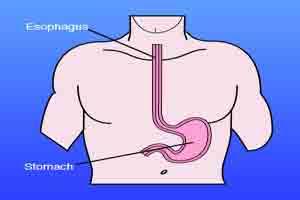- Home
- Editorial
- News
- Practice Guidelines
- Anesthesiology Guidelines
- Cancer Guidelines
- Cardiac Sciences Guidelines
- Critical Care Guidelines
- Dentistry Guidelines
- Dermatology Guidelines
- Diabetes and Endo Guidelines
- Diagnostics Guidelines
- ENT Guidelines
- Featured Practice Guidelines
- Gastroenterology Guidelines
- Geriatrics Guidelines
- Medicine Guidelines
- Nephrology Guidelines
- Neurosciences Guidelines
- Obs and Gynae Guidelines
- Ophthalmology Guidelines
- Orthopaedics Guidelines
- Paediatrics Guidelines
- Psychiatry Guidelines
- Pulmonology Guidelines
- Radiology Guidelines
- Surgery Guidelines
- Urology Guidelines
Major Breakthrough-Scientists Grow Human Esophagus in Lab

In a major breakthrough, scientists have grown an esophagus in the laboratory entirely from pluripotent stem cells (PSCs), which are those cells that can become any other type of cell in the body.
The study published in the journal Cell Stem Cell is the latest advancement from researchers at the Cincinnati Children's Center for Stem Cell and Organoid Medicine (CuSTOM). The center is developing new ways to study birth defects and diseases that affect millions of people with gastrointestinal disorders, such as gastric reflux, cancer, etc.
The work is leading to new personalized diagnostic methods and focused in part on developing regenerative tissue therapies to treat or cure GI disorders. Cincinnati Children's scientists and their multi-institutional collaborators already have used PSCs to bioengineer human intestine, stomach, colon and liver.
Disorders of the esophagus and trachea are prevalent enough in people that organoid models of human esophagus could be greatly beneficial," said Jim Wells, Ph.D., the chief scientific officer at CuSTOM and study lead investigator. "In addition to being a new model to study birth defects like esophageal atresia, the organoids can be used to study diseases like eosinophilic esophagitis and Barrett's metaplasia, or to bioengineer genetically matched esophageal tissue for individual patients."
The scientists based their new method for using human PSCs to general esophageal organoids on precisely timed, step-by-step manipulations of genetic and biochemical signals that pattern and form embryonic endoderm and foregut tissues. They focused in part on the gene Sox2 and its associated protein—which are already known to trigger esophageal conditions when their function is disrupted. The scientists used mice, frogs, and human tissue cultures to identify other genes and molecular pathways regulated by Sox2 during esophagus formation.
Read Also:PPI , Aspirin Combo improves outcomes in Barrett’s oesophagus : Lancet
The scientists report that during critical stages of embryonic development, the Sox2 gene blocks the programming and action of genetic pathways that direct cells to become respiratory instead of esophageal. In particular, the Sox2 protein inhibits the signaling of a molecule called Wnt and promotes the formation and survival of esophageal tissues.
In another test to help confirm the importance of Sox2 expression on the esophageal formation, researchers studied the complete loss of Sox2 during the development process in mice. The absence of Sox2 resulted in esophageal agenesis—a condition in which the esophagus terminates in a pouch.
After successfully generating fully formed human esophageal organoids—which grew to a length of about 300-800 micrometers in about two months—the bioengineered tissues were compared biochemically to esophageal tissues from patient biopsies. Those tests showed the bioengineered and biopsies tissues were strikingly similar in composition, according to the authors. and does not connect to the stomach.
The researchers will continue to investigate these organoids and efforts will be made on ways to advance the technology with a hope that the organoids will meet their therapeutic potential.
For reference log on to https://doi.org/10.1016/j.stem.2018.08.008

Disclaimer: This site is primarily intended for healthcare professionals. Any content/information on this website does not replace the advice of medical and/or health professionals and should not be construed as medical/diagnostic advice/endorsement or prescription. Use of this site is subject to our terms of use, privacy policy, advertisement policy. © 2020 Minerva Medical Treatment Pvt Ltd